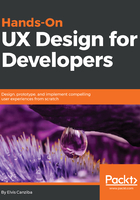
Who is a UX designer?
A UX designer is someone who investigates and analyzes how users feel about the products offered to them. UX designers then apply this knowledge to product development in order to ensure that the user has the best possible experience with that product. UX designers conduct research, analyze their findings, inform other members of the development team about their findings, monitor development projects to ensure that those findings are implemented, and do much more.
People usually presume that product design was simpler in the past. Well, they thought it was simpler because designers or product owners had a particular design in mind and built their products in a way that they thought was good and hoped their clients would like.
However, it was different because online competitions for solving specific problems were not as prominent as they are today, so even if the people didn't like a product much, they were forced to use it because there was no other option available to them. That is the reason why most of products used to be designed without users in mind.
UX increases the chances of a project's success when it finally comes to market, not least because it doesn't gamble on users taking to a product just because it's a brand name.
UX design can be found in a variety of project environments nowadays. The more complicated the project, the more essential its UX design is. Too many features handled the wrong way can deter users like nothing else.
You may not find dedicated UX teams in a start-up, but UX is always part of the objective. High-tech start-ups developing innovative projects need to understand how their users feel even more than established companies do.
The bigger the project is, the more resources it consumes, so UX becomes even more important to deliver a return on the investment.
The main methodology used to guarantee the UX in most projects is user-centered design. Simply put, user-centered design is all about designing with the user's needs and expected behaviors in mind.
We can say that if the heart of UX design is the concept of constant iterative optimization, then the problem is the blood the heart is pumping.
So, the approach for our future customers or users should be to find the problem that they are dealing with and then solve it for them. We have to find the problem and define it–feel the same pain that our users feel–and eliminate it for them. That is the highway to providing a great UX.
To stay on the right path, we will need a lot of analytical and intuitive skills, because one of the trickiest parts with problems is that when we have something that troubles us, it is difficult to define it.
In the past, the role of a UX designer was a bit more difficult, because we always had to prove the value of UX to the company we were working for, and it was a real struggle to explain to companies why UX is important and why they need to start focusing on it. However, nowadays, companies and start-ups have become aware of the importance of UX and take this user-centered design approach seriously.